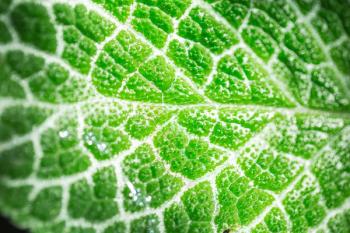Key Points
- Emerging technologies such as WL-SERS, MALDI-MSI, multidimensional chromatography, advanced biosensors, and AI-driven tools are significantly improving food analysis by enabling faster, more sensitive detection of contaminants and adulterants.
- Traditional techniques like HPLC and GC–MS remain valuable but have limitations in detecting trace contaminants in complex food matrices, which newer innovations are beginning to overcome.
- Despite the promise of these new tools, widespread adoption faces challenges such as cost, signal reliability, and system complexity.
Food analysis technologies have continued to advance over the years as manufacturers require instruments that can conduct their analysis faster and with greater accuracy to meet the demands of consumers. A recent review article explores how the latest technological innovations in spectroscopy, chromatography, biosensing, and artificial intelligence (AI) are changing the food safety industry. This article, published in Trends in Food Science & Technology, highlights what positive effect these technologies have had on food analysis, and what challenges remain (1).
What techniques have been commonly used in food analysis?
In the past, food safety assessment often relied on the same techniques. Some of the techniques most often used have been high-performance liquid chromatography (HPLC) and gas chromatography–mass spectrometry (GC–MS) (2). HPLC and GC–MS were effective for evaluating the efficacy of food products, but limitations with these techniques did suppress their utility on a wider scale (1,2). One of the key limitations of these techniques was that they often struggled to detect trace contaminants at ultralow levels, especially in complex food matrices (1). The review outlines how new technologies are overcoming these limitations, unlocking new capabilities for analysts and regulatory bodies.
What developments have been promising in food analysis?
There have been several key developments that have helped food analysis, both on the spectroscopy and chromatography side of things. To start with spectroscopy, several new techniques have been developed, including wide line surface-enhanced Raman scattering (WL-SERS), which has dramatically increased sensitivity compared to traditional Raman methods. This improvement enables detection of harmful substances like melamine in raw milk at concentrations previously undetectable, which is a beneficial for consumer health protection (1). Similarly, mass spectrometry imaging (MSI), particularly in the form of matrix-assisted laser desorption/ionization (MALDI-MSI), has made great strides in spatial resolution, allowing for detailed mapping of both nutrients and contaminants within food products (1).
On the chromatography side, multidimensional LC and GC has improved the detection of substances down to 1 part per billion (ppb). For example, 2D-LC allows for greater separation capabilities for dense mixtures (1). In addition, LC instruments are becoming more miniaturized, which has helped reduce the environmental impact of using these techniques and make them more affordable (1).
The researchers also highlight how sensors are continually being upgraded to improve on-site detection for various contaminants. For example, the researchers highlighted the emergence of the Dpyt near-infrared (NIR) fluorescent probe and electrochemiluminescent (ECL) aptasensors as contributing to this trend. These portable and highly sensitive sensors can significantly reduce the time between sampling and analysis, improving real-time decision-making in food safety management (1).
Finally, the researchers discussed the importance of AI and machine learning (ML). Food adulteration is commonly now relying on advanced models like convolutional neural networks (CNNs). These tools are enabling automated image and spectral data analysis, reducing the need for human interpretation and increasing throughput (1). Despite the current challenges AI models face, including their data requirements and computational demands, it is expected that AI continues to play an important role in future food analysis applications.
What challenges still remain in food analysis?
The food analysis space is currently seeing technological advancements on several key fronts. Although the new technologies and techniques highlighted above show great promise, several challenges still remain. For example, WL-SERS suffers from weak signal strength in certain matrices (1). High-resolution mass spectrometry (HRMS) and MSI provide excellent analytical depth, but they are costly and require complex sample preparation. And finally, 2D-LC systems must address high back pressure and potential sensitivity loss (1).
As a result, stability and affordability continue to be two of the current obstacles in having these analytical technologies be more widely adopted. The authors explain in their conclusion that wider adoption of these tools will depend on cross-disciplinary collaboration, along with focused efforts to miniaturize instrumentation, improve sensor durability, and standardize performance protocols (1).
References
- Ziani, I.; Bouakline, H.; El Guerraf, A.; et al. Integrating AI and Advanced Spectroscopic Techniques for Precision Food Safety and Quality Control. Trends Food Sci. Technol. 2025, 156, 104850. DOI: 10.1016/j.tifs.2024.104850
- Tackett, B. PFAS in Food Analysis. LCGC The Column 2025, 21 (2), 20–23. Available at: https://www.chromatographyonline.com/view/pfas-in-food-analysis






